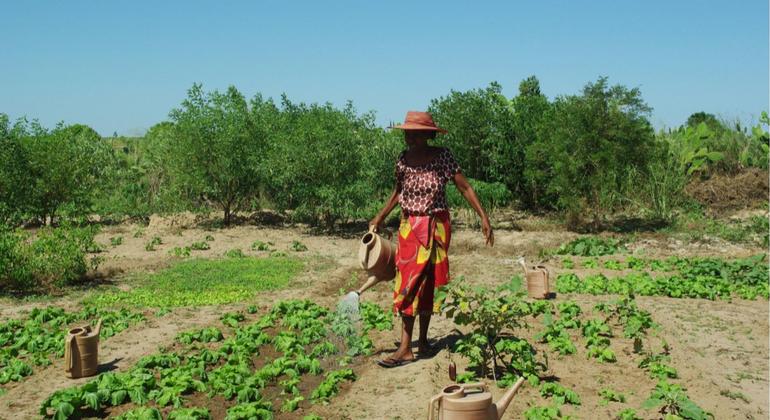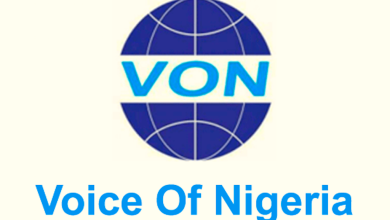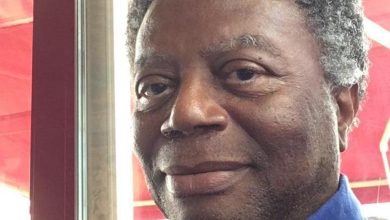From seeds to solar energy in Madagascar: a UN President’s blog

“Since I arrived in Madagascar as the UN Resident Coordinator at the end of 2020, the country has been hit by unprecedented hurricanes and is experiencing the worst drought in 40 years.
Along with other severe weather events, the storm caused widespread famine and pushed thousands into famine-like situations. In the southern part of the country, where the land is dry and families depend on rain-fed agriculture, the issue of malnutrition is serious.
Crops not only suffer from lack of water but are also damaged by high winds that blow away fertile soil. In these situations, communities struggle to grow essential commodities, including corn.
Food enrichment
Last year, thanks to sufficient rains and increased humanitarian aid from the United Nations, food and nutrition security improved in southern Madagascar. Our multi-sectoral humanitarian response benefited close to 1.1 million people in the areas of nutrition, food security and livelihoods, water, sanitation and hygiene, education, health and protection, and cash transfers.
By 2022, no region is classified as facing a food emergency, compared to five regions last year. But, accelerating recovery from the drought and addressing these long-term impacts across the region requires more than just emergency aid.
This is why, alongside ongoing humanitarian efforts, our UN Country Team is working together to help communities across the region build greater resilience to the effects of drought and prepare for future climate shocks. .
The Office of the Resident Coordinator plays a key role in promoting greater coordination of the institutions’ interventions; help increase synergies and enhance the effectiveness of our collaboration.
In April of this year, I visited the region to see how our collective efforts are impacting communities on the ground.
Here’s what works:
Prevention is key
At a food distribution site in Maroalimpoty, run by the World Food Program (WFP), I saw how important integrated prevention measures are to address the issue of malnutrition. As well as providing general food distributions to meet the immediate food needs of the most vulnerable families in the region, WFP is using the same site to conduct screenings and conduct nutritional support and awareness raising sessions targeted at children and pregnant women and pregnant women.
In a neighboring community, I visited an integrated health center where UNICEF-trained nurses screened children for malnutrition. The center provides a full range of high-quality nutrition interventions and, with the UN Population Fund (UNFPA) and World Health Organization (WHO) support, carries out prevention, treatment and advocacy activities on other health issues. , benefiting the entire community.
At the nearby school, UNICEF collaborated with the Government and the private sector to install a solar water recycling system to provide drinking water to the combined health center, school, and the entire community. WFP is active in the same school with its feeding program which promotes school attendance and activity, both of which are key prevention measures.
A young girl enjoys drinking water from a UNICEF-supported sanitation program.
Eat with dignity
In the same area, two Food and Agriculture Organization (FAO) interventions are helping to increase the food production capacity of vulnerable households through sustainable agricultural practices.
Thanks to these interventions, local farmers’ groups received drought-resistant seeds, tools, and training on climate-friendly agricultural practices. In addition to this, a solar-powered drip irrigation system, developed by FAO, provides year-round access to water, enabling families to grow enough for their own energy and surplus to sell in the local market. and keep as seed.
Some of the families I met in the area said that during the height crisis, they used to have cactus as daily food, but now, thanks to the strong plants they have enough to eat “with dignity” and even more have two meals a day. .
For Madame Nativité, a widow with two children who has been severely affected by the drought, the seeds and the small amount of money she receives from the program are helping her get back on her feet and send her children to school.
In the same area, I saw how the UN Development Program (UNDP) project takes simple solutions to stabilize coastal sand dunes and protect crops from dust and sand storms, known locally as first. By planting three types of plants to reduce the effect of wind and retain soil moisture, this project has helped communities grow cash crops in areas that were previously lost to sand.
Members of the UN supported group are doing handicrafts.
Cooperation in building resilience
Companies are collaborating in other ways to build economic resilience that leads to better food and food security outcomes. For example, in the development cooperation we visited, UNDP is providing training and equipment to modernize the development and processing of the sisal plant to make handicrafts for sale.
At the same time, the International Fund for Agricultural Development (IFAD) and WFP have given cooperation members the tools and knowledge to process other plants into non-perishable products, including using manioc to make flour, making jam from cactus, and organic soap with aloe. vera, cactus, or other extracts.
Talking to one of the members of the group, it is clear that especially during the winter, these handicrafts provide families in the area with an additional, stable source of income.
With a long-term development vision in mind, the agricultural sector supported by IFAD aims to overcome chronic problems linked to drought and climate change by adopting a large scale of sustainable practices.
Members of the agricultural cooperative grow manioc.
Solar power station
At our last stop, we visited the remote village of Anjamahavelo where WFP has set up a solar powered, connected, and sustainable water source that UNICEF is upgrading.
In this context, UN agencies and partners are collaborating to develop a drip irrigation system that aims to improve agricultural production as well as providing a range of integrated community services such as a digital classroom and a workshop. training for women and youth.
Solar farms have the potential to eventually provide electricity to local schools and other facilities as well as provide business opportunities to diversify livelihoods and support communities to cope with future climate shocks.
A girl accesses digital tools in a classroom in southern Madagascar.
Partnership is the ‘best answer’
There are daunting challenges ahead for communities in southern Madagascar, but I am also convinced that our increasingly integrated approach is the best answer to the many problems of malnutrition and food insecurity.
In isolation, these interventions – ranging from food distribution and acute malnutrition treatment to the adoption of climate change practices and sustainable energy generation – will have a positive yet limited impact. But, by working together and creating synergies across the UN Country Team, we deliver more sustainable results and provide communities across the region with the tools they need to rebuild and recover with resilience.
UN Resident Coordinator
- The UN Resident Coordinator, sometimes called the RC, is the highest-ranking representative of the UN development program at the country level.
- In this occasional series, UN News invites RCs to blog on issues important to the UN and the country they serve.
- Learn more about the UN’s work in Madagascar here.
- Find out more about the UN Development Coordination Office here.







